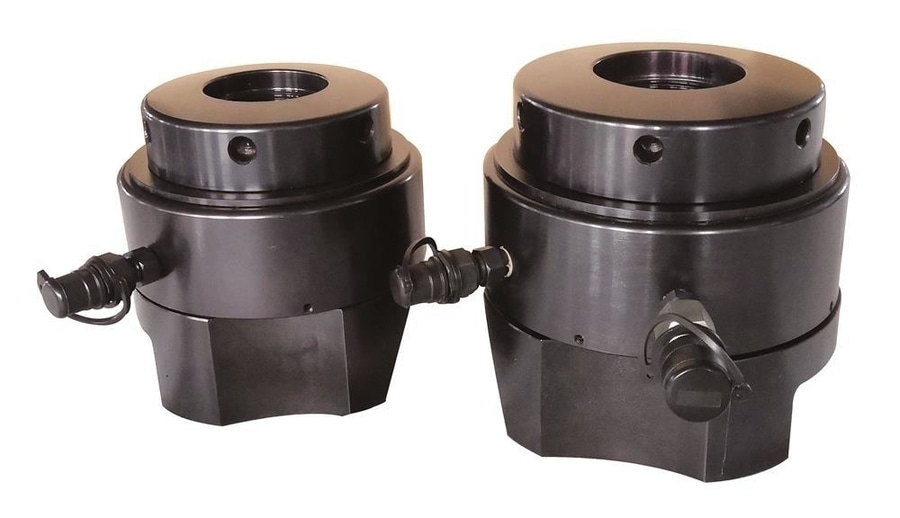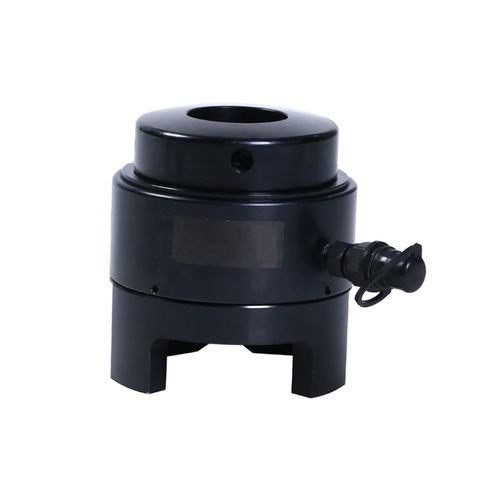
#Industry News
How To Use Hydraulic Bolt Tensioner System?
How To Use Hydraulic Bolt Tensioner System?
The hydraulic bolt tensioner system consists of two parts, including an ultra-high pressure hydraulic pump and a bolt tensioner.
Below we will separately introduce the use steps of ultra-high pressure hydraulic pump and bolt tensioner.
How To Use The Bolt Tensioner?
First of all, the biggest advantage of the hydraulic bolt tensioner is that multiple bolts can be fastened and disassembled at the same time with a uniform distribution force. Hydraulic bolt tensioner is a safe, efficient and fast tool, and it is the best tool for fastening and dismantling bolts of various specifications. Mainly used in petrochemicals, nuclear power, wind power, hydropower, thermal power, ships, railways, aerospace, mining, heavy machinery and other fields. Moreover, the hydraulic bolt tensioner can be designed as a special tensioner according to different working conditions, application conditions and user requirements.
Correct Operation Of The TorcStark Hydraulic Bolt Tensioner Method:
First: After the hydraulic bolt tensioner is connected to the power supply, stop the forward and reverse movement of the lower roller and the lifting movement of the upper roller, and check whether each movement is abnormally stuck.
Second: hydraulic bolt tensioner is delineated according to the smooth diagram of the machine, and stop refueling at the smooth and artificial smooth points of each oil cup as required.
Third: strictly follow the coil processing sequence and control method to stop the operation, when the upper roller is raised to the limit position, pay great attention to the safe operation of the hydraulic bolt tensioner. When the main drive is stopped, the lifting of the upper roller can be stopped, the tilting of the overturning bearing is reset, and the upper roller is tilted. In the process of operating the hydraulic bolt tensioner, if it is found that the hydraulic bolt tensioner has irregular noises, impacts and other abnormal phenomena, it should be shut down immediately for introspection.
Fourthly: the staff operating the hydraulic bolt tensioner must coordinate with each other, obey the command of the person in charge of the coil, and stop the mind opening device without a password. After the final coil is completed, the site should be cleared after the work is completed, and the maintenance tasks of the hydraulic bolt tensioner should be done, and the power supply should be blocked in time.
Tip: Features of different hydraulic bolt tensioners
The ordinary hydraulic bolt tensioner is suitable for the tension of single specification bolts, with light weight and high precision. Small size and compact structure.
The tension head interchangeable hydraulic bolt tensioner is highly versatile, and can be applied to the tension of multiple specifications of bolts by replacing the tension head; Single-stage reset hydraulic bolt tensioner piston automatic reset design, suitable for frequent use.
The double-cylinder design of the bipolar reset hydraulic bolt tensioner is suitable for working conditions with narrow space.
How To Use Ultra-High Pressure Hydraulic Tensioner Pump?
The hydraulic bolt tensioner uses the hydraulic pressure source provided by the hydraulic booster pump (ultra-high pressure hydraulic pump) to determine the tensile force according to the tensile strength, yield coefficient and elongation of the material. Utilizing the tensile force generated by the ultra-high pressure oil pump, the bolts used are elongated in the elastic deformation zone, and the bolt diameter is slightly deformed, making the nut easy to loosen.
What Are The Steps To Pressurize The Hydraulic Bolt Tensioner System?
Close the shut-off valve on the hydraulic pump, and then press it to the pressure required by the system. When the pressure required by the system is reached, turn off the hydraulic pump (maintain this pressure).
At this time, the bolt will be loaded by the tensile force of the tensioner, and the tension of the tension head will separate the hexagonal nut from the flange.
Check the pressure gauge of the pump to ensure that the pressure is constant. When the system pressure is stable, use the tie rod to turn the nut at the opening of the support ring back to the joint surface, and use the tie rod to tighten the hex nut to the joint surface (if the hex nut is not tightly connected to the joint surface, extend the stretching time). The tightening order of the nuts is not important, but it should be ensured that no one of the nuts is missed, and each nut in the same group is tightened once.
Open the pump slowly and there will be a valve. At this time, the load will be transferred from the stretcher to the nut. Use the shift lever to turn the stretching head to return the piston to its original position. (Note: If the system does not meet the required pressure, continue to run from part 9H;
Disconnect the oil pipe, install the tensioner on another set of bolts, repeat the above sequence and steps, record the pressure value maintained by the first pressure, and provide a reference for the second pressure.
Test Methods For Performance Requirements Of Hydraulic Bolt Tensioners:
The cone test load of the nut can also be calculated by multiplying its specified axial test load by its coefficient (0.3-1d). d is the nominal diameter of the nut in inches.
The cone test load test is currently the best test method for identifying divergent lattice nuts. It will be a feasibility requirement until a better identification technology is obtained.
Hardness is an important mechanical property of nuts. Not only the convenience of the hardness test, but more importantly, it is the only known standard for measuring the acceptability of performance nuts, whose test load exceeds the normal tensile strength test performance. Unlike external threaded fasteners, there is no clear correlation between the hardness and strength of steel nuts or nuts of other metal materials. The reason lies in the controllability of the nut’s geometric size on the strength of the nut.
Generally, nuts with a specified test load less than 120,000 psi can be tested under the test load. For nuts with higher strength, the test must be carried out according to the minimum hardness value. In addition, the strength level of the nut requires that all sizes and grades of nuts be hardened to ensure that their hardness does not exceed the specified minimum. These are especially important for heat-treated nuts, because heat-treated nuts can confirm that they have been machined correctly to eliminate any possible embrittlement.
Finally
Through the above introduction, I believe you have a certain understanding of the operation of the hydraulic bolt tensioner system, so how should we choose a hydraulic bolt tensioner? You can follow the rules below.
Look at the medium used. Generally, a good hydraulic bolt tensioner uses mineral oil as the working medium. The relative moving surface can be lubricated by itself and has a long service life.
Look at the material of the hydraulic bolt tensioner. Good tensioners are made of 42 chromium molybdenum.
Depending on the process standard, good hydraulic bolt tensioners are produced through strict standards.
Look at the brand of the accessories used, generally like seals and tubing joints, all of which need to use imported brands, which are resistant to high pressure and corrosion.
If these conditions are met, the quality of the hydraulic bolt tensioner you choose will be guaranteed. TorcStark is a professional manufacturer of hydraulic bolt tensioner systems. Its products are of good quality, cheap, and cost-effective. It’s worth you knowing and purchasing.



